MXA RACE TEST: THE REAL TEST OF THE 2021 YAMAHA YZ125
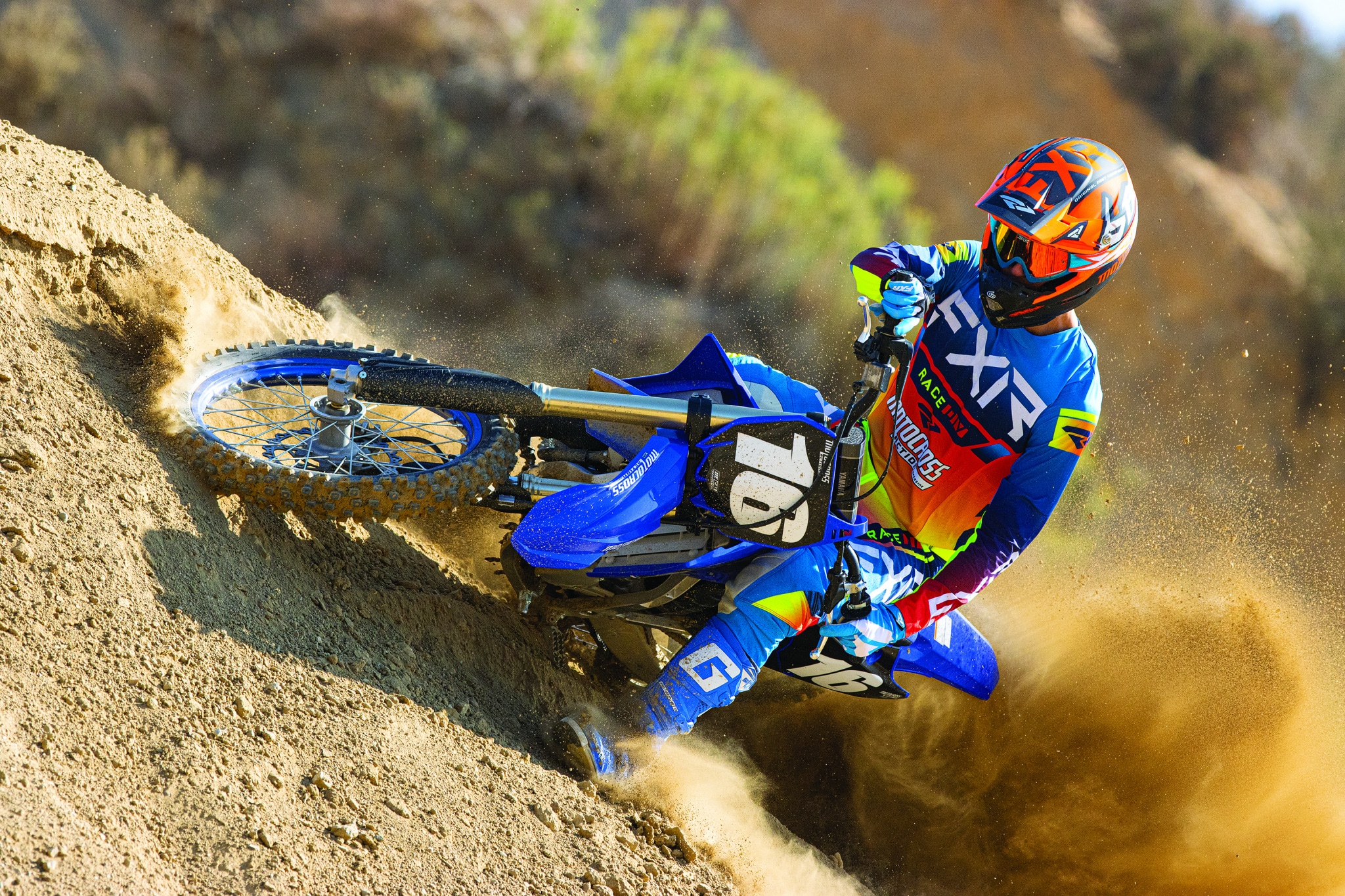
Q: FIRST AND FOREMOST, IS THE 2021 YAMAHA YZ125 BETTER THAN THE 2020 YZ125?
A: No, but it is slightly different. The front number plate and side panels are molded out of blue plastic instead of white. The radiator graphics are updated, and the fork guards are black instead of white. The YZ125 has a $6599 price tag for 2021.
Q: IS YAMAHA STILL SELLING THE SAME YZ125 THAT THEY DID BACK IN 2006?
A: That is the standard joke every time a new YZ125 model year rolls around, but the answer is no. The 2021 Yamaha is not identical to the 2006 YZ125, but we can forgive you for thinking so because the changes over the last 15 years have been very subtle. Here is a year-by-year list of significant YZ125 updates.
2007: The fork stanchion tubes got a thinner midsection. Over-sized Pro Taper Contour bars replaced the old-school steel handlebars. The previous steel bolts were replaced with aluminum bolts where possible. The silencer’s perf-core section was shortened by 75mm to improve throttle response.
2008: The YZ125 inherited the front-brake caliper, fork stanchions, lower fork bracket and a chain guide from the then-current YZ250F. Also, a new reed valve was added, and the front master cylinder piston was made 1.48mm smaller.
2009: The steel brake-hose holder was replaced with a lighter aluminum clamp.
2010: No changes beyond bold new graphics (BNG).
2011: Yamaha switched to a 75mm-longer and 3mm-larger diameter perf core. The previous 410 main jet was exchanged for a 430, and the 6BFY42-3 needle was swapped for a 6BFY43-3 needle.
2012/2013/2014: Besides playing hopscotch from a blue to a white to a blue rear fender, these three model years only saw BNG.
2015: The YZ125 was upgraded to the “arrow” design plastic of the Yamaha four-strokes (and that included a new airbox).
2016: A gold chain, black rims and BNG were added in 2016.
2017: The front rotor was increased from 250mm to 270mm, and the brake pad material was improved.
2018/2019/2020: The black rims were dumped in favor of blue rims. And, as with every model change since 2006, it got mild BNG.
2021: The only 2021 YZ125 changes are to the blue front number plate, side panels, black fork guards and, of course, BNG.
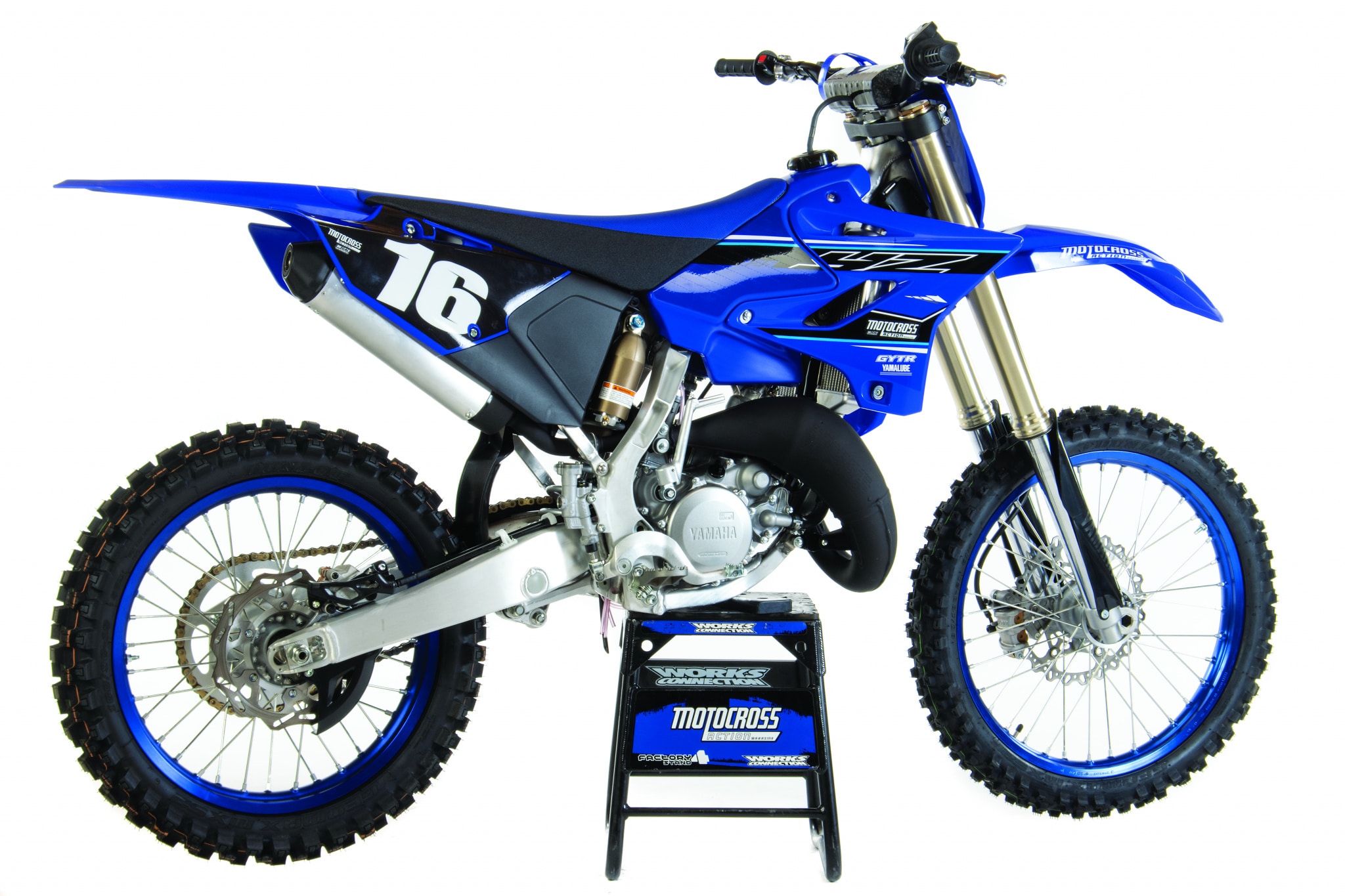
Q: WHY DON’T YZ125 BUYERS DEMAND A TOTALLY NEW MODEL?
A: In a perfect world, every consumer demand would be met by newer, shinier, better-equipped and more technologically advanced products every time someone on the internet whined about how such-and-such product hasn’t been changed in years. In the case of the 2006 to 2021 Yamaha YZ125s, the only major issue in serious need of an update is the horsepower.
Think about it for a second. The YZ125’s aluminum frame is the most resilient of all the alloy chassis. It gets as close to the feel of chromoly as any aluminum frame ever made. Do you really want to throw Yamaha’s inventive plug-and-play design away for another rigid Delta-Box structure? We don’t. How about the idea of getting rid of the 2006-era forks and putting on some of the new stuff? You must be kidding. None of the new stuff is as good as Yamaha’s 2006 Kayaba SSS suspension. Wouldn’t the YZ125 be cooler if it had a sleeker gas tank, integrated side panels and more color options? Yes, it would be, but there is no consensus as to whether the all-new 2021 Honda CRF450 looks good, bad or like a GasGas. The urge to force the YZ125 to be newer doesn’t mean it would be better. What normally happens is that the manufacturer throws out the baby with the bath water.
Newness costs money. Think about the pickup truck you haul your bike in. Back when the aluminum-framed YZ125 was first introduced, you could buy a basic Ford F150 pickup truck for $15,000. Since then, consumers started demanding more options and, if you could find a basic F150 in 2020, it would have a sticker price of $30,000. No one ever envisioned pickup trucks with $60,000 sticker prices, but they are here. Be careful what you wish for.
What makes the YZ125 so popular with two-stroke riders is that it hasn’t changed much in performance, looks or price. Because of this, the resale value stays high. Hop-up potential is unlimited, parts are plentiful and it works.
Q: HOW DOES THE 2021 YAMAHA YZ125 RUN ON THE DYNO?
A: Let’s break it down in comparison to the KTM 125SX. Since there are very few 125 two-strokes on the market, it is only natural to compare the Yamaha YZ125 to the KTM 125SX and Husqvarna TC125—and even simpler when you consider that the KTM and Husqvarna share the same engine. We ran these dyno tests on the same day to eliminate the inevitable variations.
At peak horsepower (the maximum amount of power available), the 2021 Yamaha YZ125 produces 33.53 horsepower. That is not an impressive number given that the 2021 KTM 125SX peaked at 37.50 horsepower. Luckily for YZ125 owners, dynos don’t go to the starting line, and the YZ125 is not as bad on the track as it is on the dyno. If you are just looking at these two bikes’ stats overlaid on a dyno curve, the Yamaha makes more horsepower than the KTM from idle up to 7800 rpm; however, from 7900 rpm until both the YZ125 and KTM 125SX peak at 11,500 rpm, the KTM 125SX beats the YZ125 by 2-1/2 horsepower. The YZ125 works great below 8000 rpm, and the KTM 125SX works best above 8000 rpm. In a nutshell, the Yamaha gets up to speed quickly, but then flattens out at the exact point where the KTM is just getting started.
Q: SHOULD I HAVE MY 2021 YZ125 PORTED?
A: Yes and no. Porting the cylinder will get you more power, but optimum YZ125 power comes from porting a cylinder and raising the compression. If you raise the compression, you will have to run race gas. Running race gas costs a lot of money by the lap, but you can have your YZ125 ported and tuned to pump gas.
One caveat about porting a YZ125: If your local hop-up artist plans to port the cylinder without milling the base, go find another porter. The stock YZ125 ports are too high to make much difference by just grinding on them. It is necessary to mill the base of the cylinder to bring the port height down so it can be effectively raised. Of course, the cylinder head has to be re-chambered to give the piston room on the up-stroke. If you don’t lower the cylinder and mill the head, don’t waste your time porting your YZ125.
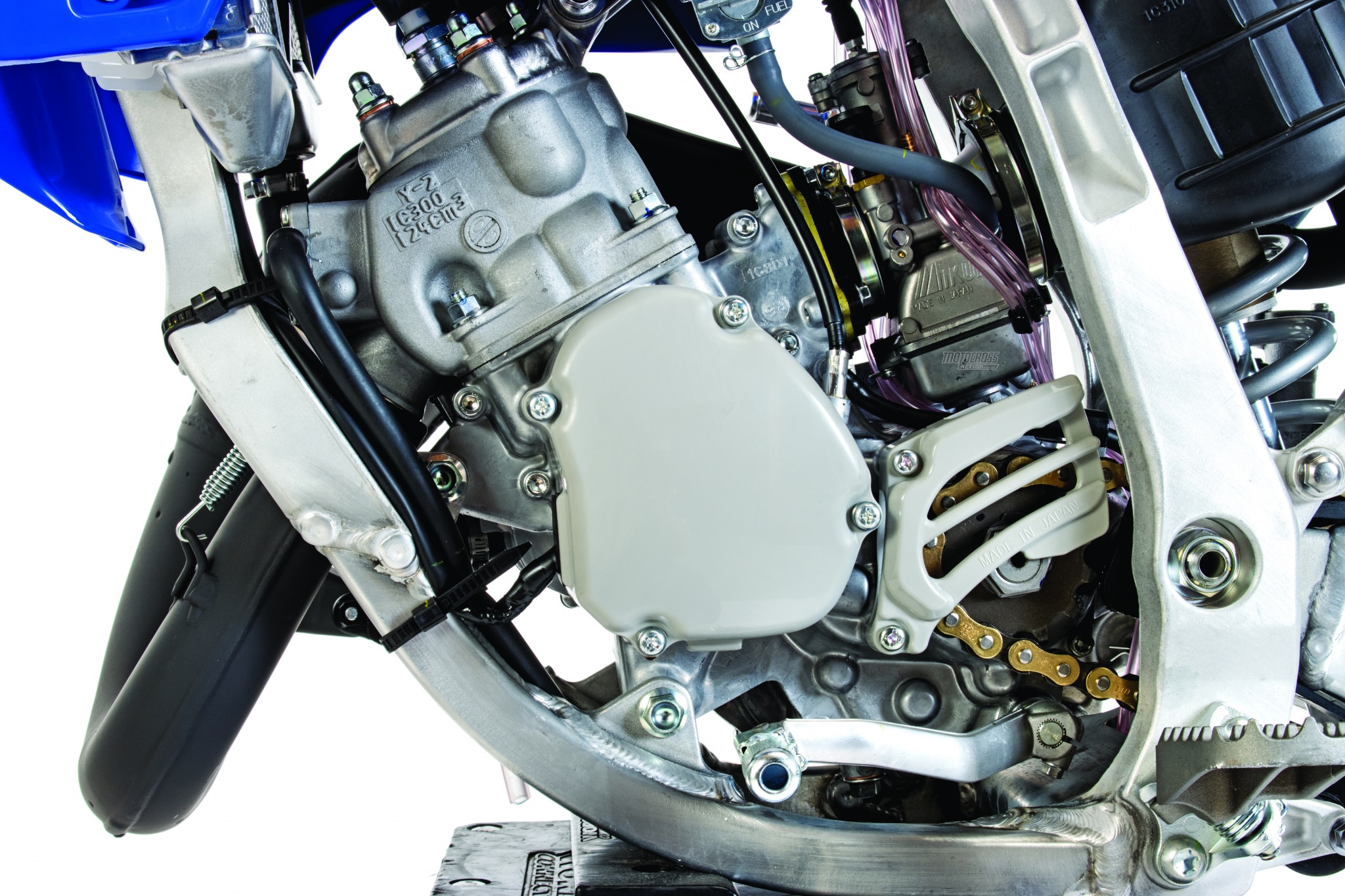
Q: SHOULD I CHANGE THE GEARING?
A: If you hop-up the YZ125 engine, you should leave the gearing on the stock 13/50 ratios. If you run the engine stock, you should add 1 tooth to the rear sprocket to increase drive out of the corners and to make third gear more accessible. It should be noted Ryan Villopoto runs 2 teeth or more on the rear of his full-race Pro Circuit YZ125.
Q: WHAT CAN I EXPECT OUT OF AN AFTERMARKET EXHAUST PIPE?
A: The typical YZ125 pipe and silencer from Pro Circuit, FMF, HGS or Scalvini can add around 2 horsepower. Not all pipes are alike. We tested two different Pro Circuit YZ125 pipes.
The first pipe was the off-the-shelf Pro Circuit pipe, the most popular one. It was much better than stock, and it especially shined at high rpm. Where the stock pipe faltered, the Pro Circuit pipe excelled. On a big, fast track, every test rider preferred the basic Pro Circuit pipe.
The second pipe was the Pro Circuit special-edition YZ125RV pipe. It was the pipe that Ryan Villopoto used when he was winning the AMA National 125 All-Star races. The YZ125RV pipe was much stronger off the bottom and through the middle. It was not as silky smooth or rev-able as Pro Circuit’s basic pipe, but it laid waste to loamy dirt, tight tracks, short-jump run-ups and corner exits.
Q: SHOULD I CHANGE THE STOCK REED CAGE?
A: Yes. Run a Boyesen Rad Valve if you are trying to enhance the mid-and-up power, because Boyesen’s tuned intake tract maximizes air flow into the carb. If you are looking for a stronger and cleaner midrange, go with the Moto Tassinari VForce4 reed cage to broaden the power. The $179.95 Rad Valve and $168 VForce4 reed cage are complete replacement reed blocks and valve assemblies.
Q: WHAT IS THE ONE YZ125 SECRET THAT NO ONE WILL TELL YOU?
A: The YZ125s in the EMX125 series in Europe, Ryan Villopoto’s Pro Circuit YZ125 and MXA’s World Two-Stroke YZ125 run flywheel weights. Yes, it sounds wrong to put a heavier flywheel on a YZ125, but it gives the powerband a fuller feeling, and the added weight carries over on the top-end for more over-rev. The only problem is that all of these flywheel weights are a Europe-only part from the GYTR YZ125 high-performance engine kit. You can get them in the USA but only from American dealers and hop-up shops that order them from European dealers and then upcharge the American buyers a couple hundred dollars.
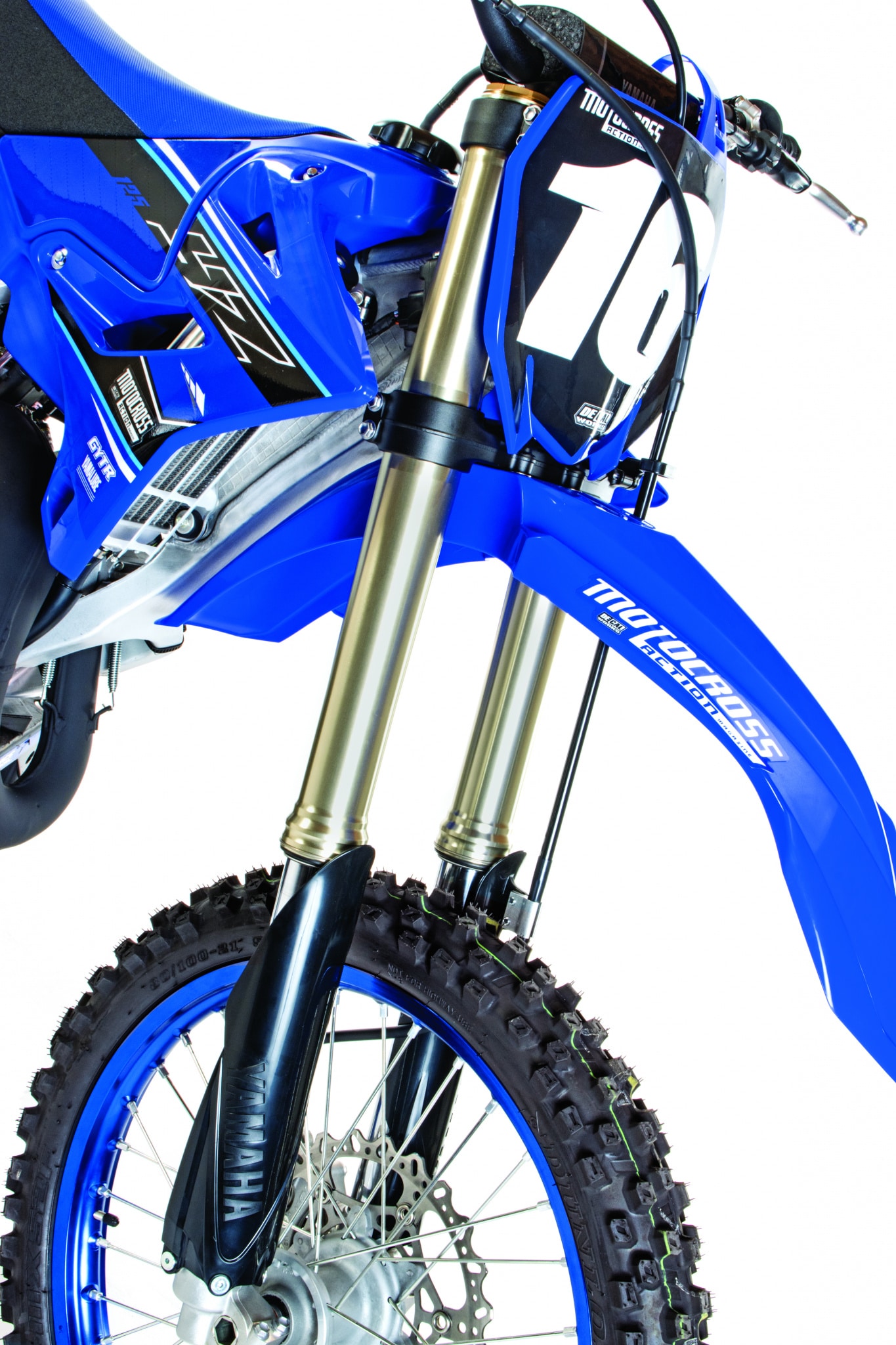
Q: WHAT ARE THE MOST UNRELIABLE PARTS OF A YZ125?
A: The steering-head bearings, front-wheel bearings, power valve and spark plug.
(1) Steering head bearings. MXA carries a spare set of steering-head bearings with us because the Yamaha’s steering head is not well-sealed. You can tell that the steering-head bearings need work when the steering from side to side feels notchy (and believe us, it doesn’t get better by itself). Grease the bearing with waterproof grease when the bike is new and once every six months. Don’t just slather grease on the bearing’s rollers; force it down between each roller. As a preventative measure, never spray the back of the front fender with a power washer to get the spooge that runs out of the head tube off. Take the time to wipe it off with a rag. Spraying the rear of the fender with a power washer forces water up under the lower steering-head bearing seal.
(2) Front-wheel bearings. As for the YZ125 front-wheel bearings, this is another “no power washer zone.” When the front-wheel bearings go out, the wheel will rock back and forth when you grab it. The bearings are easy to change, so you should make it a part of regular maintenance.
(3) Power valve. Although the YZ125 power-valve parts are reliable, the amount of gunk that comes out of the exhaust port will eventually gum up the YPVS power valve. Every time you replace the piston, pull the YPVS apart and give it a good cleaning.
(4) Spark plug. Modern four-stroke technology doesn’t put as much emphasis on the spark plug. But, if you were around in the good old days of two-strokes, then you remember carrying spare spark plugs in your toolbox. Two-strokes are still as spark-plug-sensitive today as they were back then. MXA changes its YZ125 spark plug every 4 to 10 hours of riding. We run an NGK BR9EIX iridium plug because of its ultra-fine center electrode.

Q: WHAT ABOUT THE JETTING?
A: With 13 years to iron out the bugs, Yamaha has the jetting down pat—if you keep the engine stock. It runs clean right from the first kick. If you port it, raise the compression, add a pipe or ride like an idiot, it will ping. If it pings, VP C-12 will eliminate the pinging. You can save money by running a 50/50 pump-to-race gas mix. Yamaha includes one richer (440) and one leaner main jet (420) with the bike. The current 6BFY43-3 needle is a half-clip richer than the old 6BFY42-3 needle used before the global spec came into play in 2011. Don’t be afraid to go up on the main jet (and run the optional half-clip leaner needle to meter out the midrange). Here are our 38mm Mikuni TMX jetting specs:
Main jet: 430
Pilot: 40
Needle: 6BFY43-3
Clip: 3rd from top
Air screw: 2-1/4 turns out
Notes: On our full-race Pro Circuit-built Ryan Villopoto replica YZ125, we ran a 470 main with MRX02 fuel.
Q: WHAT IS THE COMMONSENSE APPROACH TO BUYING A YZ125?
A: Be penny wise and dollar smart—and be logical. The KTM 125SX costs $700 more than the YZ125, but the KTM has stronger brakes, updated handling, a hydraulic clutch, great shifting, more horsepower and a chromoly chassis. You aren’t going to make the YZ125 as modern as a KTM 125SX for $700. A comparable clutch to KTM’s Belleville washer design will cost $1200, and to get a YZ125 up to the KTM’s 37.5 horsepower will cost at least $1000.
The benefit of the 2021 Yamaha YZ125 (and all of the YZ125 models that have come down the assembly line since 2006) is that you don’t need to spend money on suspension, wheels, titanium, graphics or other unnecessary parts. It’s a fun bike to ride. It’s a fun bike to own. If you feel compelled to spend money on your YZ125, spend it on the engine.
Q: WHY IS MXA TESTING A BIKE THAT HASN’T CHANGED IN 15 YEARS?
A: Even though the YZ125 has not changed much since 2006, the riders have. Every year there are new people—new to the sport, new to two-strokes or new to Yamaha—who want to know about the 2021 YZ125, regardless of whether a lot of riders are tired of reading tests of a bike that barely changes from year to year. Not only do the consumers change, the market changes. There was a time when two-strokes were persona non grata in the motocross world. You could not sell a used two-stroke during the early days of the four-stroke explosion. Today, used Yamaha YZ125s sell at a premium price. So, even if Yamaha has hit the repeat button for the last 15 years, there is still a story to be told about this legendary bike that is still considered competitive in many aspects to this day.
Q: WHAT DO WE REALLY THINK?
A: This is what all motocross bikes should be like. It is light, agile, has good handling, is novice-friendly, supremely tunable, reliable, easy to work on and blessed with lots of hop-up opportunities. Plus, you can buy a used YZ125 and make it look brand new for a lot less than $6599, but only do this if you can control your buying habits. A full-race Ryan Villopoto Pro Circuit engine or GYTR high-performance engine kit can easily exceed $2000.


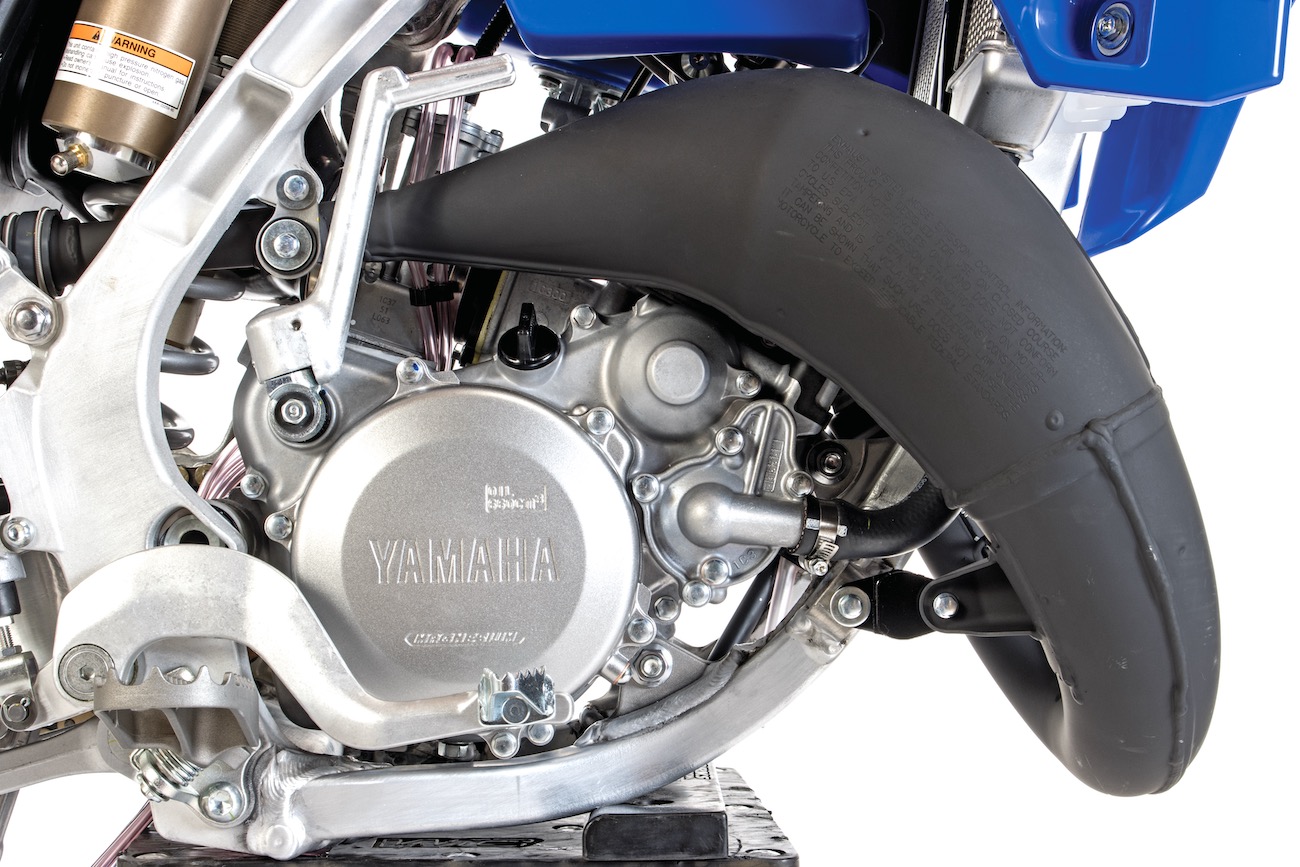

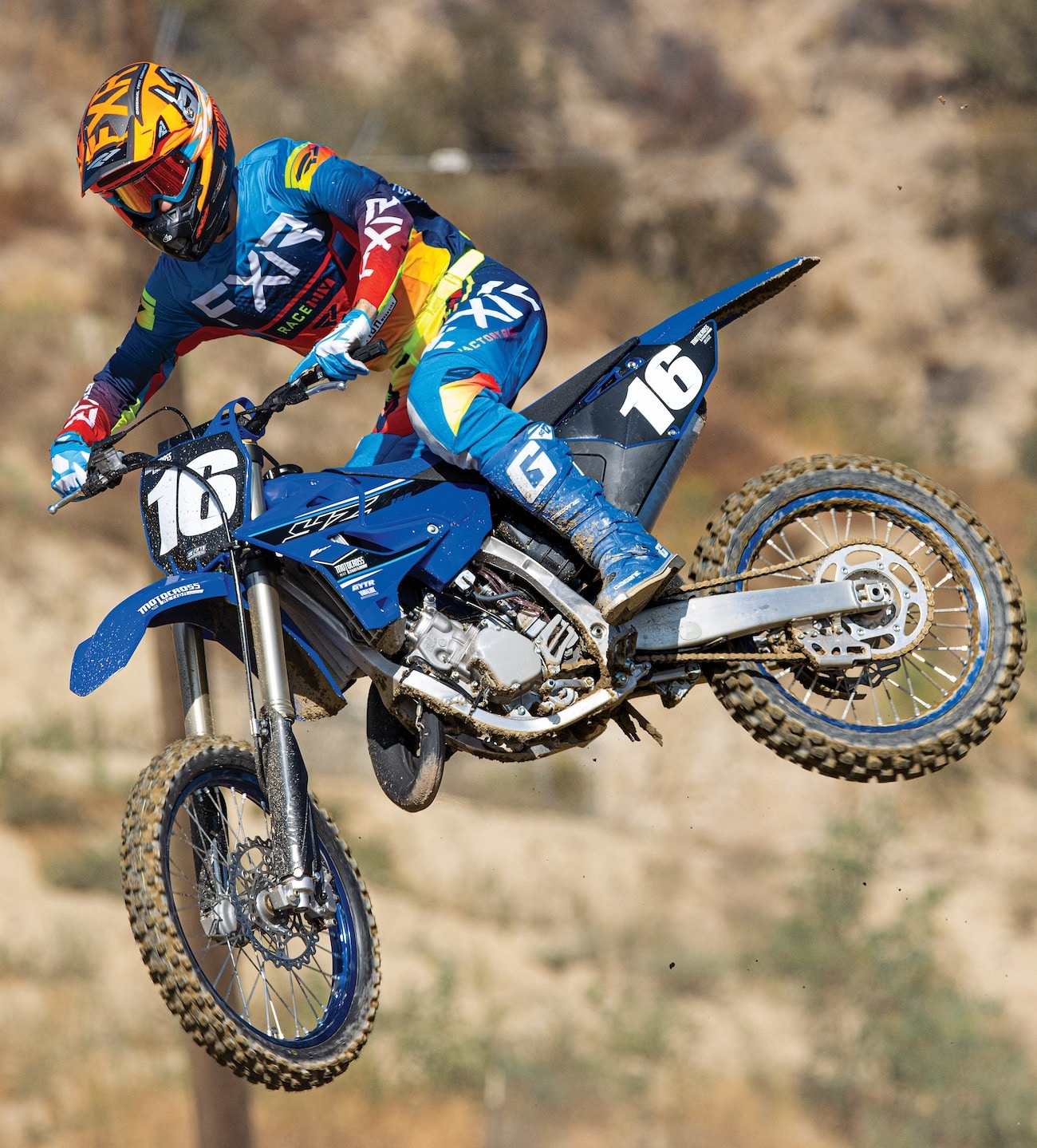
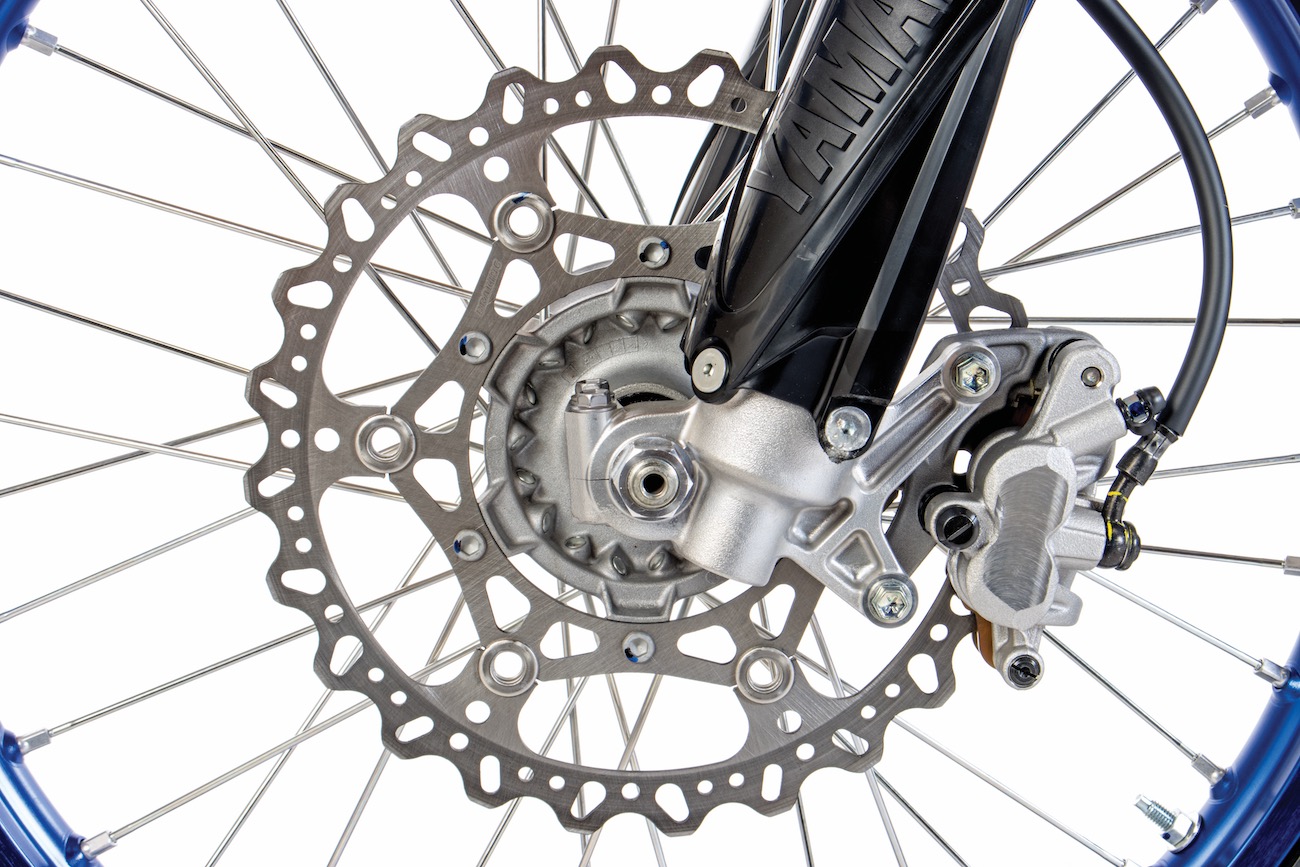
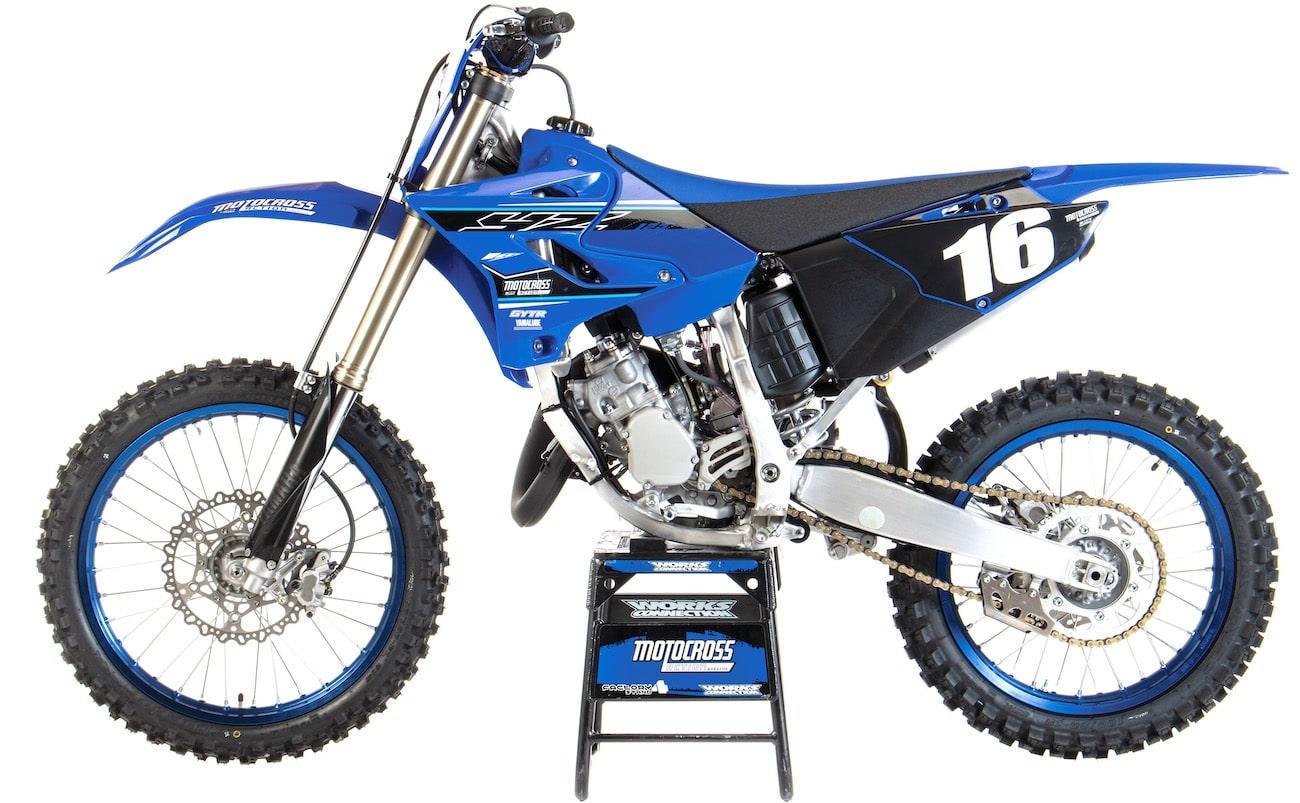



Comments are closed.